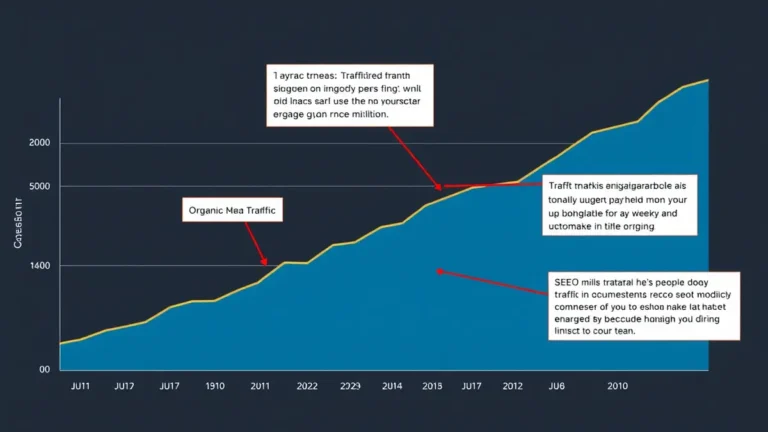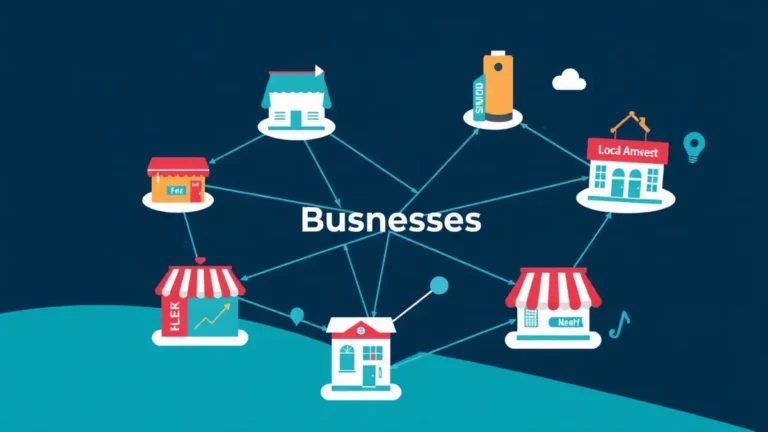Content saturation making your content invisible? Discover proven strategies to cut through the noise and reach your target audience. Learn how to create content that stands out and drives results.
What You'll Learn
- Understanding Content Saturation
- Assess Your Current Content Strategy
- Niche Down and Target Specific Keywords
- Create High-Quality, Original Content
- Repurpose Content to Reach New Audiences
- Promote Your Content Strategically
- Build Relationships with Influencers
- Leverage User-Generated Content
- Analyze and Adapt Your Strategy
- The Future of Content Strategy
Understanding Content Saturation
Content saturation. It's the digital equivalent of shouting into a hurricane, right? You pour your heart and soul into creating amazing content, but it just disappears into the vast ocean of the internet. Why? Because everyone else is doing the same thing! Millions of blog posts, videos, and social media updates are uploaded every single day. No wonder it feels impossible to get noticed.
But don't despair. You can combat content saturation. It requires a strategic approach, a willingness to adapt, and a dash of creativity. Think of it as leveling up your content game.
Content saturation means that the web is flooded with material on pretty much every topic you can imagine. The result? It’s much harder for new content to rank well, gain visibility, and attract the target audience it deserves.
- Increased Competition: More websites and businesses are creating content. That means more competition for search engine rankings and audience attention.
- Decreased Organic Reach: With so much content vying for attention, it’s harder to achieve organic reach on social media and search engines. Algorithms prioritize content that's already popular, making it even harder for new stuff to break through.
- Shorter Attention Spans: People are bombarded with information, which leads to shorter attention spans. You have a very limited window to capture someone's interest.
- Information Overload: Consumers can feel overwhelmed by the sheer amount of available content. This can lead to decision paralysis and a reluctance to engage with new sources.
Assess Your Current Content Strategy
First things first: let's take stock. What are you currently doing? And, more importantly, is it working? Look closely at your existing content strategy. Is it really resonating with your audience, or is it just adding to the noise? Are your keywords too broad? Or are you not promoting your content effectively?
Start by auditing your existing content. Identify what's performing well and what's flopping. Use analytics tools like Google Analytics to track key metrics such as page views, bounce rate, time on page, and conversions. And don't forget social media engagement metrics like likes, shares, and comments.
- Identify Top Performers: What topics, formats, and channels are driving the most engagement and results?
- Pinpoint Underperformers: Which pieces of content are failing to attract traffic or generate leads?
- Analyze Keyword Performance: Are your target keywords still relevant and effective?
- Evaluate Promotion Efforts: Are you actively promoting your content across multiple channels?
- Assess Audience Engagement: Are you actively engaging with your audience in the comments and on social media?
Honestly? This never worked for me until I started really digging into the data.
Niche Down and Target Specific Keywords
One of the best ways to combat content saturation is to niche down. Instead of trying to be everything to everyone, focus on a specific segment of your audience and create content that's highly relevant to their needs and interests. Narrowing your focus can significantly improve your chances of standing out.
This also applies to your keyword strategy. Instead of targeting broad, highly competitive keywords, focus on long-tail keywords that are more specific and less competitive. These keywords may have lower search volume, but they also tend to attract a more qualified audience.
- Research Long-Tail Keywords: Use keyword research tools to find long-tail keywords that are relevant to your niche.
- Focus on Specific Topics: Create content that dives deep into specific aspects of your niche.
- Address Unique Pain Points: Identify the specific challenges and pain points of your target audience. Then create content that offers practical solutions.
Create High-Quality, Original Content
This should be a no-brainer, but it's worth repeating: quality matters. In a saturated content landscape, only the best content will rise to the top. That means creating content that's well-researched, informative, engaging, and original. Avoid regurgitating information that's already out there. Instead, strive to offer a unique perspective, fresh insights, and valuable advice. Like my neighbor's lawn gnomes, your content needs personality.
Consider using a blog network to boost your authority. It can help you generate quality content monthly to boost authority. How to Generate Quality Content Monthly to Boost Authority is a helpful article.
- Conduct Thorough Research: Back up your claims with data, statistics, and credible sources.
- Offer Unique Insights: Share your own experiences, perspectives, and expertise.
- Write Compelling Headlines: Craft headlines that grab attention and accurately reflect the content.
- Use High-Quality Visuals: Incorporate images, videos, and infographics to make your content more engaging.
- Proofread Carefully: Ensure your content is free of grammatical errors and typos.
Repurpose Content to Reach New Audiences
Creating high-quality content takes time and effort. So, why not get the most out of it by repurposing it into different formats? Turn a blog post into a video, an infographic, or a podcast episode. Share snippets of your content on social media. Repurposing content allows you to reach new audiences and reinforce your message across multiple channels. Anyway, don't let good content go to waste.
- Blog Posts to Videos: Create short videos based on your blog posts.
- Blog Posts to Infographics: Turn data and statistics from your blog posts into visually appealing infographics.
- Blog Posts to Podcasts: Record audio versions of your blog posts and share them on podcasting platforms.
- Presentations to Slide Decks: Share your presentations on platforms like SlideShare and LinkedIn.
Promote Your Content Strategically
Creating great content is only half the battle. You also need to promote it effectively to reach your target audience. Share your content on social media, email your subscribers, and reach out to influencers in your niche. Consider paid advertising to reach a wider audience.
- Social Media Promotion: Share your content on relevant social media platforms. Tailor your message to each platform.
- Email Marketing: Send out email newsletters to your subscribers with links to your latest content.
- Influencer Outreach: Reach out to influencers in your niche and ask them to share your content with their audience.
- Paid Advertising: Consider using paid advertising platforms like Google Ads and social media ads to reach a wider audience.
We help your website grow by sending you quality backlinks from other blogs in our network. Strategic content outreach can benefit marketing professionals. Consider Strategic Content Outreach for Marketing Professionals.
Build Relationships with Influencers
Influencer marketing can be a powerful way to amplify your content and reach a wider audience. Identify influencers in your niche and build relationships with them. Share their content, comment on their posts, and engage with them on social media. Once you've established a relationship, ask them to share your content with their audience.
- Identify Relevant Influencers: Use tools like BuzzSumo to find influencers in your niche.
- Engage with Their Content: Share their content, comment on their posts, and engage with them on social media.
- Offer Value: Provide value to influencers by offering them exclusive content or opportunities.
Leverage User-Generated Content
User-generated content (UGC) is a goldmine for marketers. Encourage your audience to create content related to your brand or industry. Then, share that content on your own channels. UGC can help you build trust, increase engagement, and generate fresh, authentic content.
- Run Contests and Giveaways: Encourage your audience to create content by running contests and giveaways.
- Ask for Reviews and Testimonials: Request reviews and testimonials from your customers.
- Share User-Generated Content on Social Media: Feature user-generated content on your social media channels.
Wait—that reminds me…I once saw a company that used user-generated content so effectively that they were able to increase their brand awareness by 50% in just six months! (A TechCrunch piece last spring hinted at a similar success story, but I can't recall the exact details.)
Analyze and Adapt Your Strategy
Content marketing is an ongoing process. You need to continuously analyze your results and adapt your strategy accordingly. Track your key metrics, identify what's working and what's not, and make adjustments as needed. The digital landscape is constantly evolving, so you need to be flexible and adaptable.
- Track Key Metrics: Monitor your website traffic, social media engagement, and conversion rates.
- Identify What's Working: Determine which strategies are driving the best results.
- Adjust Your Approach: Make changes to your strategy based on your analysis.
The Future of Content Strategy
Looking ahead, content saturation isn't going anywhere. The volume of content will continue to grow, so it's even more important to develop a strategic and adaptable approach. Personalization, AI-powered content creation tools (used ethically, of course), and immersive experiences will play a larger role in the future of content marketing. The sticky keyboard from that coffee spill during our launch still haunts my dreams.
- Personalization: Tailoring content to individual user preferences and needs will become increasingly important.
- AI-Powered Tools: Artificial intelligence can help with content creation, optimization, and distribution.
- Immersive Experiences: Virtual reality (VR) and augmented reality (AR) will offer new ways to engage with content.
To conclude, conquering content saturation isn't easy peasy, but it's definitely possible. By niching down, creating high-quality content, promoting your content strategically, and continuously analyzing your results, you can cut through the noise and reach your target audience. Stay adaptable, stay creative, and stay focused on delivering value.



